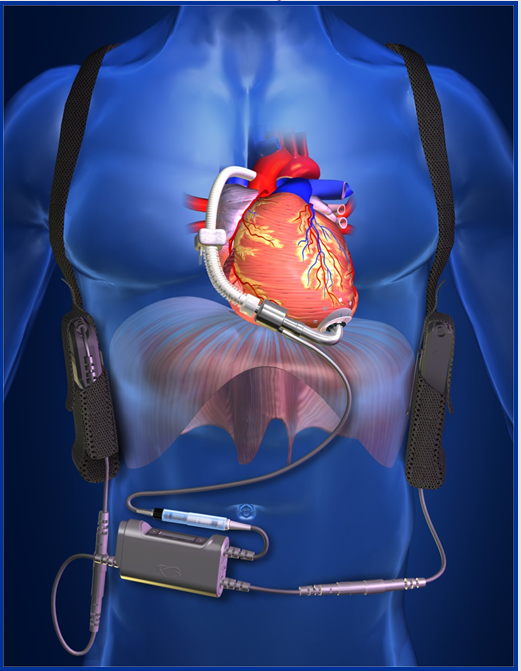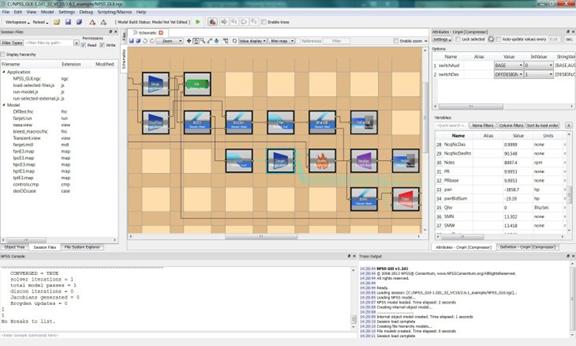

Invention of the Year Awards for 2001
The Hollow Cathode Assembly (HCA) is the winner of Government Invention of the Year for 2001. The HCA, developed at NASA’s Glenn Research Center, is the primary component of the ISS Plasma Contactor System. HCA technology is in the NSTAR ion thruster on that spacecraft on Deep Space 1. The hollow cathodes on the ion thruster have operated flawlessly for over 16,000 hours. Ballistic Missile Defense Organization's (BMDO) Russian Hall Effect Thruster Test (RHETT) is the first U.S. flight demonstration of Hall thruster technology. HCA for ISS required enormous technology development from what was state-of-the-art from 500 hours life, to 28,000 hours life, and from 10-ignitions to over 6000-ignition capability.
The HCA mitigates spacecraft charging by emitting electron current from a low-density plasma to electrically "ground" ISS to near-space plasma potential. High voltages and exposed conducting surfaces across the ISS's solar arrays could cause the station structure to charge to a significant negative potential (> -100 V) relative to the ambient space plasma. Since the ISS structure is electrically tied to the solar arrays, this charging can lead to arcing, which would damage critical spacecraft surfaces. The HCA alleviates spacecraft charge build-up by emitting electrons collected by the solar arrays. A discharge is ignited between the hollow cathode and anode of the HCA. The resulting ionized gas, or plasma, is coupled to the spacecraft potential. When this plasma "sees" the ambient space plasma at a different potential, electrons stream between the two plasmas to equilibrate their potentials, thereby controlling spacecraft charging. The HCA is unique in that it controls spacecraft charging in a self-regulating manner.
Developed at NASA’S Johnson Space Center, a Ventricular Assist Device (VAD) is the 2001 NASA Commercial Invention of the Year. The VAD assists in the pumping of blood from the lower left ventricle to the ascending aorta. In operation, the pump is powered by batteries and has an external, patient-operated controller. The small turbine pump works in concert with the heart, to assist rather than to replace the heart's own natural pumping ability. The VAD was developed originally by NASA with private funding and assistance after a NASA employee heart patient spoke with Dr. Debakey about problems with VADs and suggested that he work with NASA designers.
The VAD is used in three distinct modes:
- bridge to transplant — a temporary device used to help the patient survive while waiting for a suitable transplant organ to become available.
- bridge to recovery — surgeons have discovered that with some hearts, the assistance supplied by the VAD is sufficient to allow the natural heart to repair itself, in which case, the VAD can later be removed.
- a permanent implant.
The VAD uses NASA's most advanced 3D software design program (INS3D). It is literally the smallest and most viable (potentially permanent usage possible) implantable VAD in existence. The blades of the flow straightener, inducer, impeller, and diffuser are all optimized to function together to minimize blood hemolysis. Precisely shaped entrance and outlet angles, and the transitions between them, as well as the number of blades and their axial and radial positioning, blade pitch, degree of wrap and overlap, and axial and radial clearances, all contribute to the overall pumping efficiency and enhance the blood protecting character of the design. To preclude thrombosis (clotting) of the blood in the low flow rate areas around the bearings, the bearing areas are configured to allow cross-linked blood to fill and seal those areas.
Software of the Year Awards for 2001
The Numerical Propulsion System Simulation (NPSS) Version 1, developed at NASA’s Glenn Research Center, is the first major aerospace design and analysis tool designed and written in the object-oriented (OO) programming paradigm to improve engineering productivity. NPSS' new OO software architecture enables multi-fidelity analysis in the design environment and facilitates integration of multiple disciplines. At its foundation, NPSS is a component-based OO engine cycle simulator designed to perform steady state and transient performance predictions, test data reduction, and many other traditional tasks of engine cycle simulation codes. An NPSS engine model is assembled from a collection of interconnected components and controlled through the implementation of an appropriate solution algorithm. Historically, limited computer resources restricted component representations used in these simulations to be simple characterizations of empirical test results, or the results of more sophisticated component models run separately. NPSS, however, is capable of calling upon more sophisticated component models directly. Using the computer industry's communication standard Common Object Request Broker Architecture (CORBA), NPSS can interact with external codes running on other computers distributed across a network. NPSS will allow the seamless integration of design tools at varying levels of dimensional fidelity across multiple technology disciplines. The NPSS term zooming originated in the conceptual phase of NPSS. Zooming is the coupling of analyses at various levels of detail.
In March 2000, NPSS Version 1 was distributed to NASA, Department of Defense (DOD) and the US aircraft industry. NPSS is considered a world-class propulsion system simulation tool that provides the user with unprecedented capability and ease of use. Using NPSS, the General Electric Aircraft Engines (GEAE) Company estimates a 55% reduction in engine analysis time throughout the product life cycle. This is based on a documented detailed assessment by GEAE. Other industry partners predict similar savings. NPSS offers key technological advances to increasing US aerospace industry competitiveness. As such, NPSS is an emerging US standard for aerospace simulations.
The Generalized Fluid System Simulation Program (GFSSP) software package was developed at NASA’s Marshall Space Flight Center for analyzing complex internal fluid flows with multiple gas and liquid mixtures. It is extremely limited to one-dimensional flows, but uses linear techniques isolating flow properties at discrete nodes and branches in a network to simulate complex geometries. It uses a new technique of combining a Newton Raphson method with a successive substitution method to achieve solution stability and closure. GFSSP is in use for many NASA programs and projects, and fully documented in six conference papers.
 ICB Home
ICB Home Back
Back

